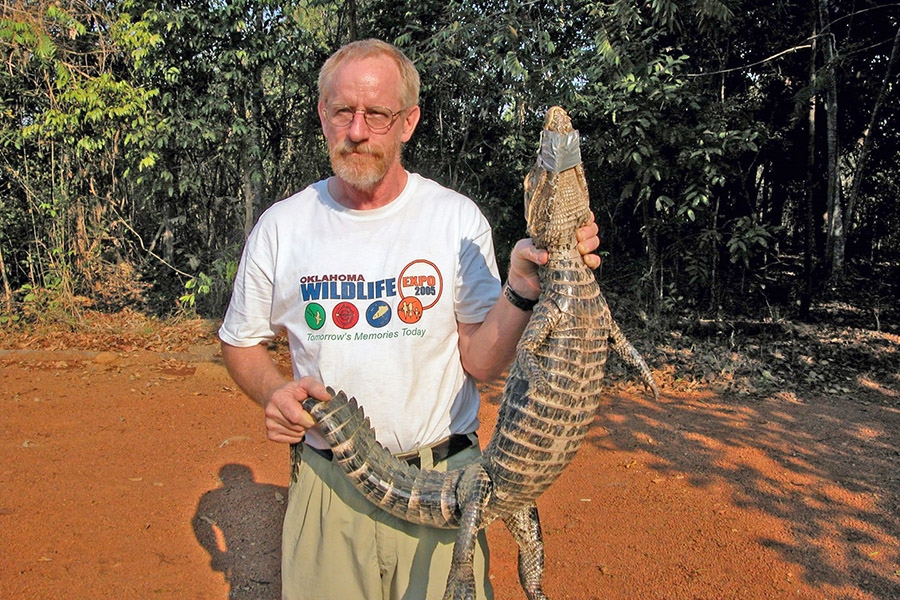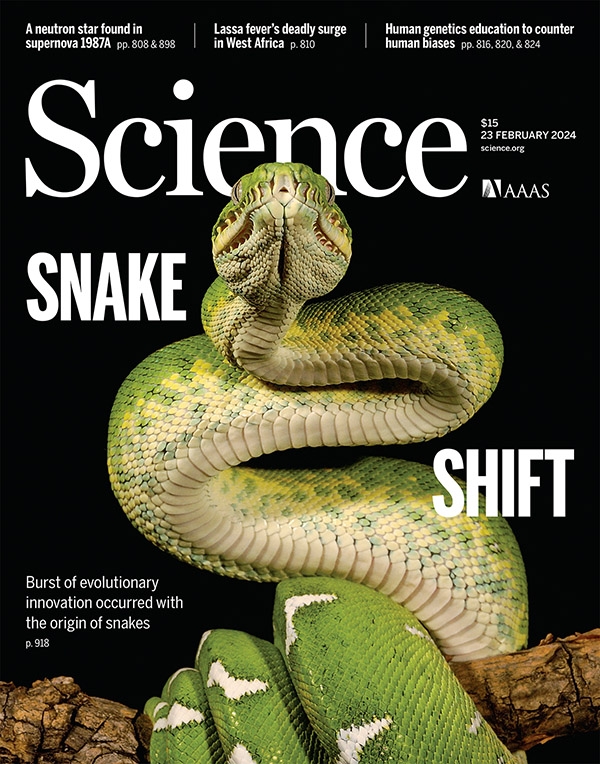
NORMAN, OKLA. – Snakes and lizards, collectively known as Squamata, have long fascinated scientists and nature enthusiasts alike. These remarkable creatures represent a staggering third of terrestrial vertebrates and have evolved an array of spectacular adaptations in locomotion, feeding, and sensory processing. Yet until now, the underlying drivers of their remarkable diversity have remained shrouded in mystery.
A groundbreaking study, published and featured on the cover of Science, sheds light on the evolutionary forces that have shaped the squamate lineage. The study was led by an international team of researchers, including six affiliates of the Sam Noble Oklahoma Museum of Natural History at the University of Oklahoma, and combines individual-based natural history observations—spanning over 60,000 animals—with a comprehensive time-calibrated phylogeny. The researchers anchored their analysis using genomic data from 1,018 species across the squamate tree of life.

“We already know that snakes had a single origin within lizards, and early on split into two groups,” said Laurie Vitt, Ph.D., a George Lynn Cross Research Professor Emeritus in the School of Biological Sciences at OU, curator emeritus of herpetology at the Sam Noble Museum and a contributing researcher for the study. “One group diversified into five largely subterranean families, and the other group diversified into all remaining snakes. By combining ecological data with genomic data, we have been able to identify rare, transformative events unpredictable from evolutionary time, phylogenetic position, or other factors known as macroevolutionary singularities. These historical events appear to have set the stage for a rapid diversification into species and families of snakes.”
“My primary contribution to this study was the collection of ecological data on many species and tissue samples of lizards and snakes for sequencing,” Vitt said. “I spent my entire career collecting ecological data on lizards in the US, Central, and South America. To accomplish this, I spent a year at one site collecting data, and I have spent several months nearly every year since 1985 in remote, primitive camps in Central or South America collecting data and tissue samples.”
While the study provides key insights into the development of modern snakes and lizards, the implications of how snakes rapidly diversified also gives new insights into broader evolutionary mechanics and how life on Earth changes over time.
The Sam Noble Museum is the officially designated natural history museum for the state of Oklahoma and is located on the University of Oklahoma Norman campus at 2401 Chautauqua Ave.
About the University of Oklahoma
Founded in 1890, the University of Oklahoma is a public research university located in Norman, Oklahoma. As the state’s flagship university, OU serves the educational, cultural, economic and health care needs of the state, region and nation. OU was named the state’s highest-ranking university in U.S. News & World Report’s most recent Best Colleges list. For more information about the university, visit ou.edu.